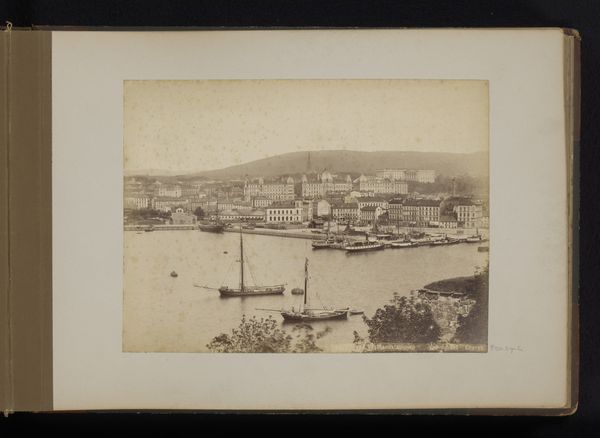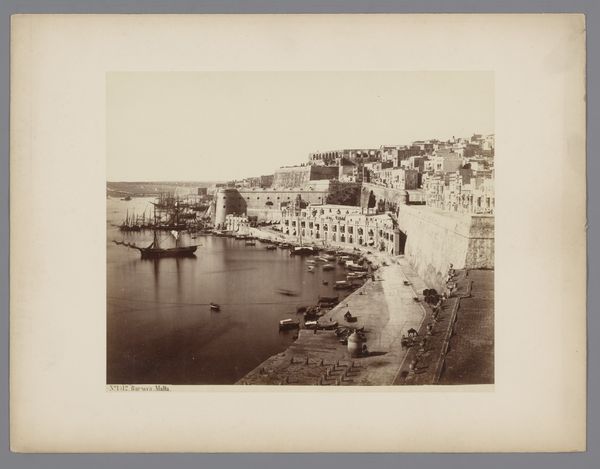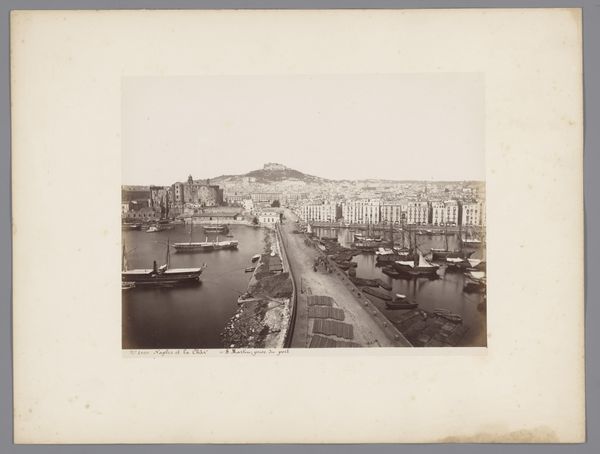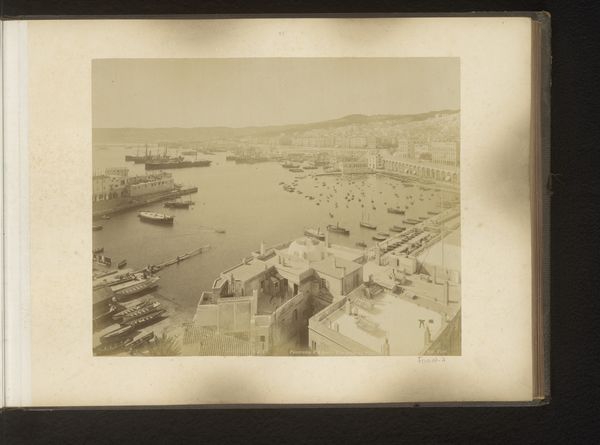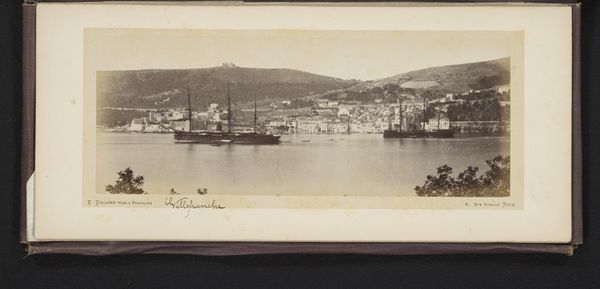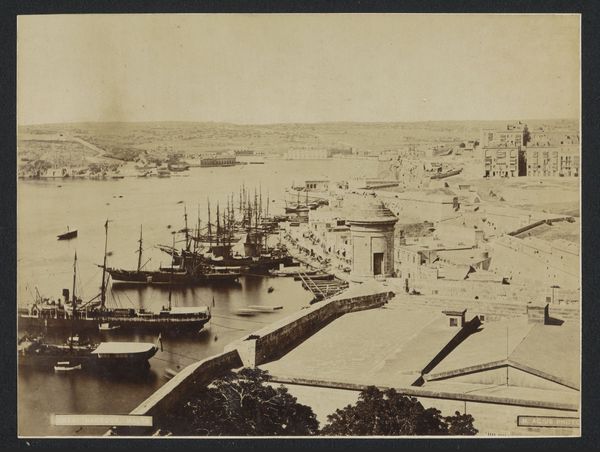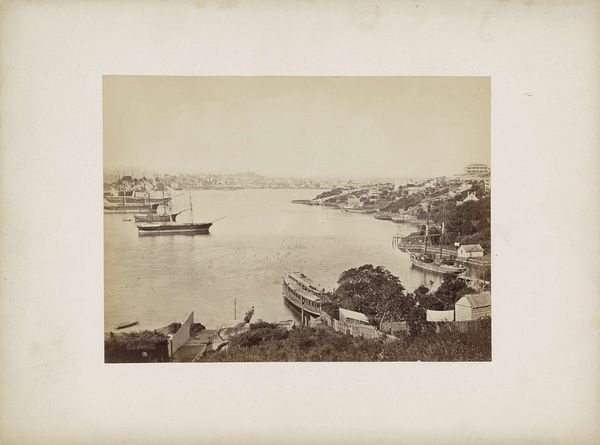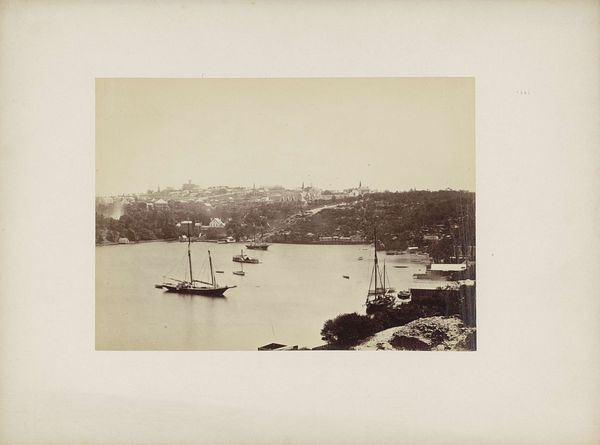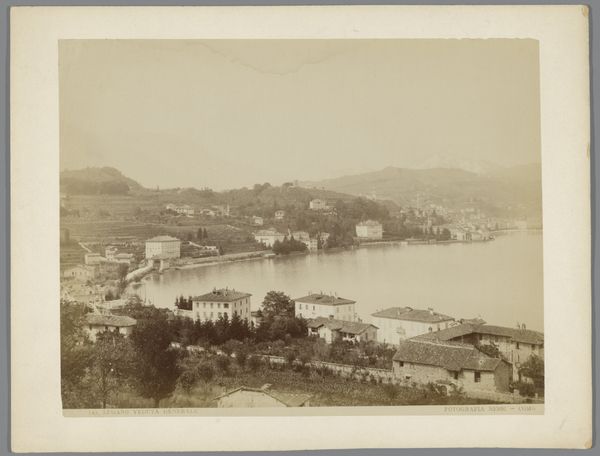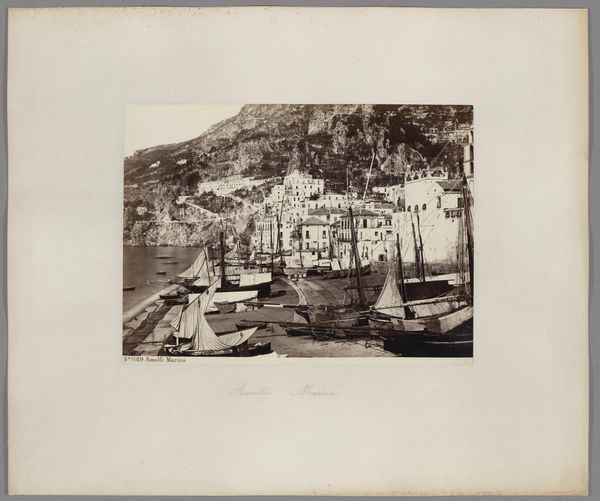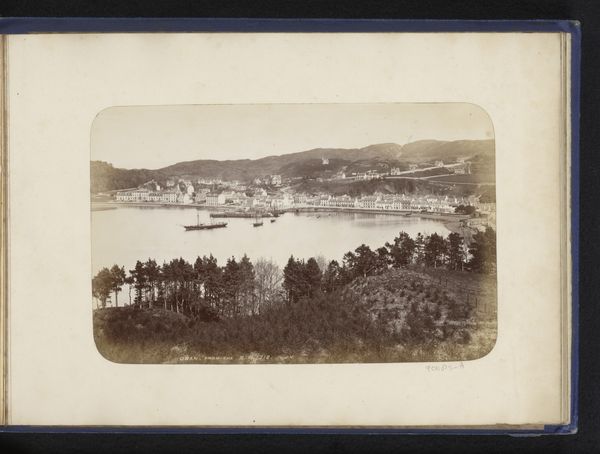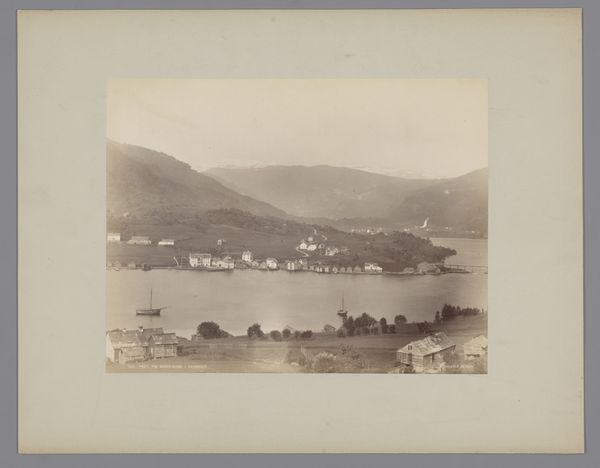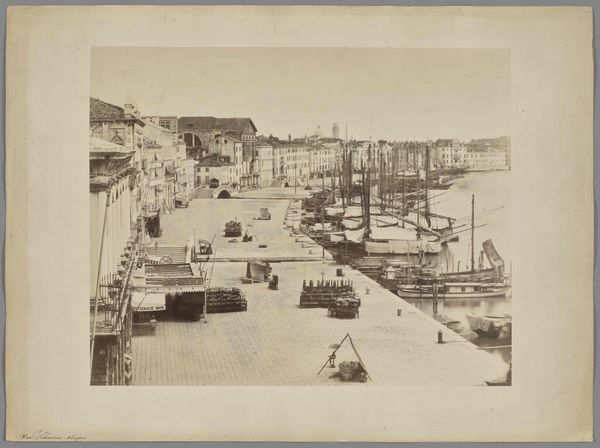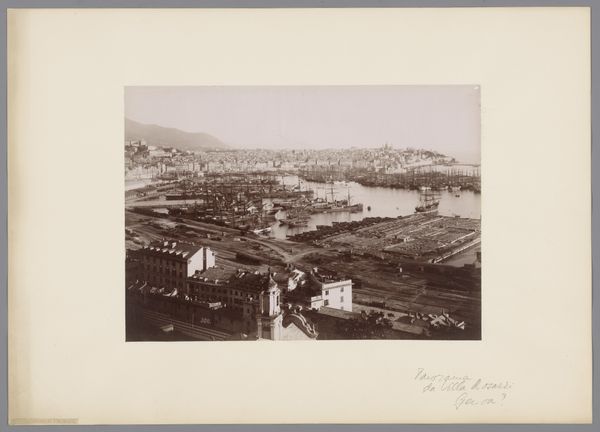
Dimensions: height 318 mm, width 445 mm
Copyright: Rijks Museum: Open Domain
Editor: Here we have "Gezicht op de haven van Genua, Italië," taken sometime between 1858 and 1893 by Alfredo Noack, a gelatin-silver print. The first thing I notice is the stark contrast between the bustle of the harbor and the seemingly impenetrable walls surrounding it. It makes me wonder about who is excluded from this beautiful scene. What's your take? Curator: That's a perceptive observation. Indeed, let's consider this harbor, a site of trade and exchange, through a lens of inclusion and exclusion. The pictorialist style softens the scene, creating an aestheticized vision of progress, yet that very aesthetic obscures the labor and the power dynamics at play. What does it mean to present this image without foregrounding the lives of the dockworkers, the sailors, or the migrants who would have passed through this port? Editor: I hadn't considered that. It seems like the "cityscape" theme focuses on the buildings and ships but overlooks the individuals whose labor makes it all possible. Curator: Precisely. Consider also the colonial context of 19th-century Italy. Ports like Genoa were crucial nodes in global trade networks that extracted resources and exploited labor from colonized territories. How complicit is this photograph in celebrating that system? Do you think that the gelatin-silver print helps to immortalize a colonial gaze? Editor: That’s a really important point about colonialism that shifts the picture's meaning. Thinking about Noack, his position as a foreign photographer also impacts his representation, perhaps idealizing the port or overlooking critical viewpoints. Curator: Exactly. His identity inevitably shaped what he chose to capture and how he framed it. So, how can we look at photographs like these today, understanding the complex interplay of art, power, and historical context? Editor: This makes me question whose stories are prioritized. Next time I see a historical landscape, I’ll try to consider the unseen actors and the underlying political systems that shape our understanding of them. Curator: Excellent. Seeing photography through that lens allows us to have a more informed and critical perspective.
Comments
No comments
Be the first to comment and join the conversation on the ultimate creative platform.
